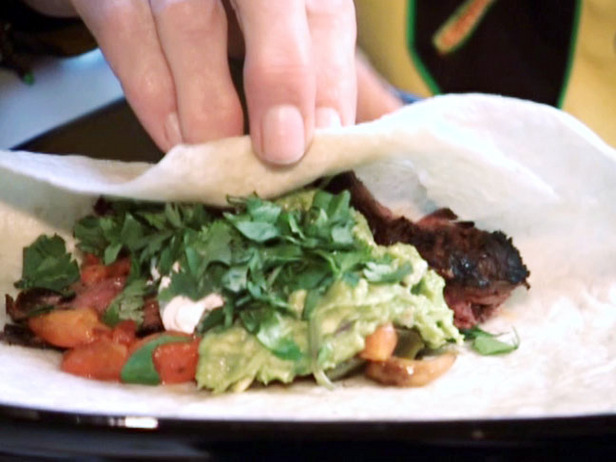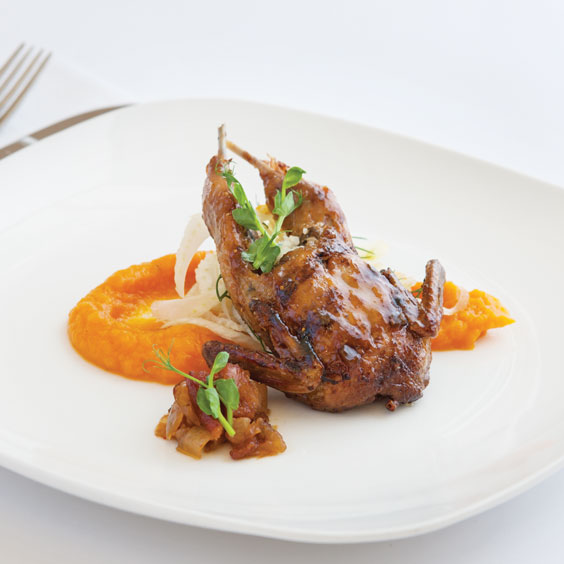
1 (2.25-pound) butternut squash, halved and seeded
1 T. olive oil, plus more for rub
½ tsp. salt
½ tsp. crushed red pepper
¼ tsp. ground black pepper
1 T. honey
¼ tsp. grated fresh nutmeg
â…› tsp. ground allspice
4 semi-boneless quail
Wooden skewers, soaked in water for 30 minutes
1½ to 2 C. Herbed Cauliflower Couscous (recipe follows)
Louisiana Fig Glaze (recipe follows)
Cane Vinegar Fennel (recipe follows)
Bacon Marmalade (recipe follows)
Preheat oven to 375°. Line a rimmed baking sheet with parchment paper. Drizzle flesh of squash with oil, and season with salt and peppers. Place squash, cut side down, on prepared pan. Roast until squash is tender, 45 to 60 minutes. Let stand until cool enough to handle. Scoop out flesh into the work bowl of a food processor. Add honey, nutmeg, and allspice; process until smooth. Adjust consistency with either water or olive oil, if necessary. Taste, and add additional salt and peppers, if desired. Set aside. Spray grill rack with nonflammable cooking spray. Preheat grill to medium-high heat (350° to 400°). Preheat oven to 400°. Lay quail on a cutting board, and straighten skin and limbs. (This allows for better grilling and presentation.) Pat dry with paper towels. Pin wings back at joints, and by gently tucking at joints, and skewer. Repeat with legs, crossing at the ankle and skewering to hold shape. Rub outside of quail with oil, and season with salt and pepper. Pick your presentation side (the prettier of the two sides), and place it on the grill first, making sure as much of the surface area of the bird is touching the grill as possible. Turn, and repeat procedure. Let quail stand until cool enough to handle. Fill cavities with Herbed Cauliflower Couscous. Place quail in a cast-iron skillet, and brush with Louisiana Fig Glaze. Bake until an instant-read thermometer inserted in thickest portion registers 165°. Remove from oven, and glaze again. On serving plates, add a spoonful of butternut squash and Cane Vinegar Fennel; top with a quail. Add Bacon Marmalade, and serve.
Herbed Cauliflower Couscous
3 C. chopped cauliflower florets
2 T. unsalted butter
½ tsp. salt
¼ tsp. ground black pepper
3 T. minced fresh sage leaves
1 T. minced fresh thyme leaves
1.In the work bowl of a food processor, place half of cauliflower; pulse until grainy. Set aside. Repeat with remaining cauliflower and any large pieces from first batch.
2.In large skillet, heat butter over medium-high heat; in batches, add enough cauliflower to cover bottom of skillet. Add water to coat skillet, and season with salt and pepper. Cover and cook until cauliflower is tender, 3 to 5 minutes. Drain cauliflower, and reserve in a large bowl. Repeat with remaining cauliflower. In a large bowl, combine cauliflower, sage, and thyme; toss. Serve immediately, or let stand until cool.
Louisiana Fig Glaze
1 (11.75-oz.) jar fig preserves (about 1 C.)
¼ C. rice wine vinegar
2 T. extra-virgin olive oil
In a large bowl, whisk together fig preserves, vinegar, and oil, breaking up any figs left whole or in chunks, until combined.
Cane Vinegar Fennel
¼ C. cane vinegar
1 T. cane syrup
½ shallot, minced
1 clove garlic, minced
â…› tsp. kosher salt, plus more to taste
â…› tsp. ground black pepper, plus more to taste
½ C. canola oil
½ large fennel bulb, fronds removed and reserved
In the container of a blender, combine vinegar, cane syrup, shallot, garlic, salt, and pepper; pulse to combine. With blender running on medium speed, slowly add oil, and process until emulsified. Add additional salt, if desired. Cover and refrigerate until using.
2.Cut fennel bulb in half lengthwise, and remove core. Thinly slice crosswise, and place in a bowl of ice water.
3.About 20 minutes prior to plating, pick some of the reserved fronds, and place in a large bowl. Drain fennel, and place on a paper towel-lined plate. Add fennel to fronds, and drizzle with vinaigrette; toss to dress. Taste, and adjust salt and pepper.
Bacon Marmalade
½ pound bacon, cut into ¼-inch pieces
1 large sweet yellow onion, diced
2 T. firmly packed brown sugar
2 T. apple cider vinegar
In a large skillet, heat bacon over medium heat; cook until bacon drippings have rendered. With a slotted spoon, remove bacon from pan, and reserve. Reserve 3 to 4 T. bacon drippings. Add onion, and cook until translucent. Return reserved bacon to pan. Add brown sugar and vinegar, and cook until mixture has thickened to a glaze. Serve warm. Can be made up to 7 days ahead.
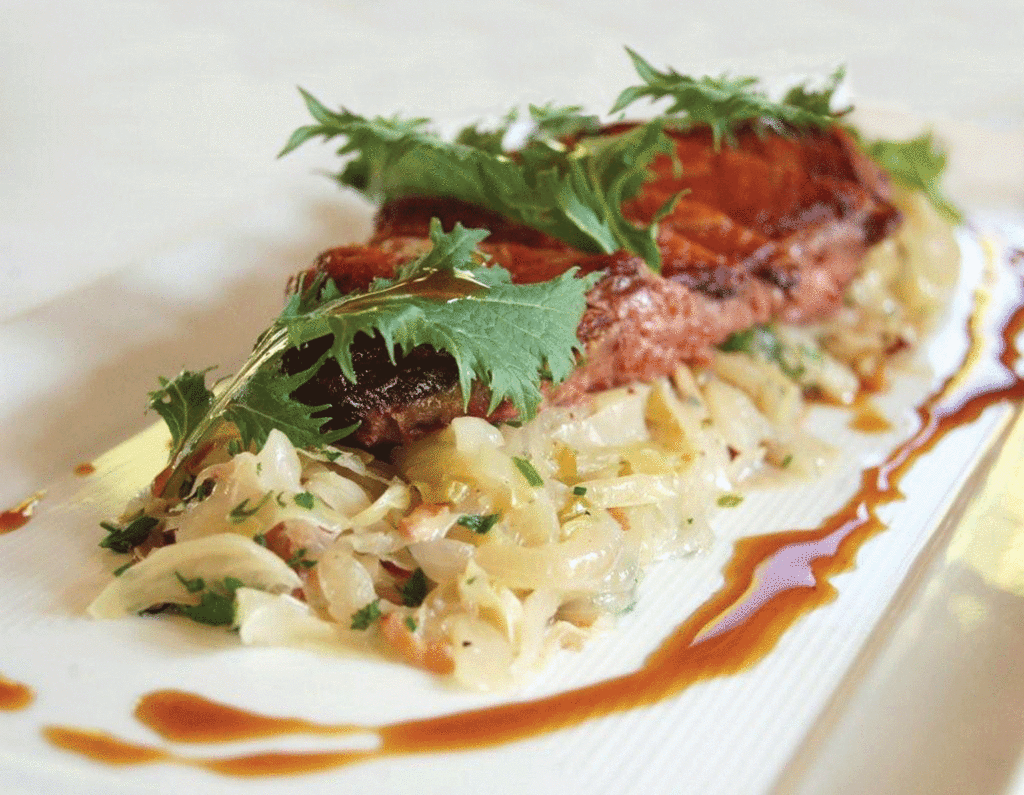 Duck Breast with Braised Cabbage
Duck Breast with Braised Cabbage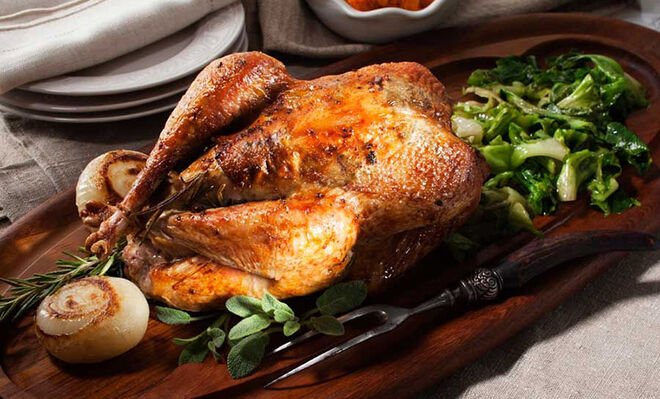
 Warm Duck and Grilled Apple Salad
Warm Duck and Grilled Apple Salad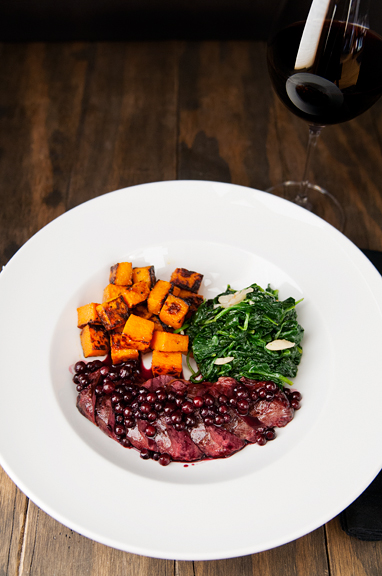 Seared Duck Breast with Huckleberry Gastrique
Seared Duck Breast with Huckleberry Gastrique

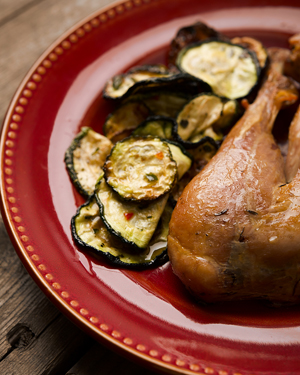



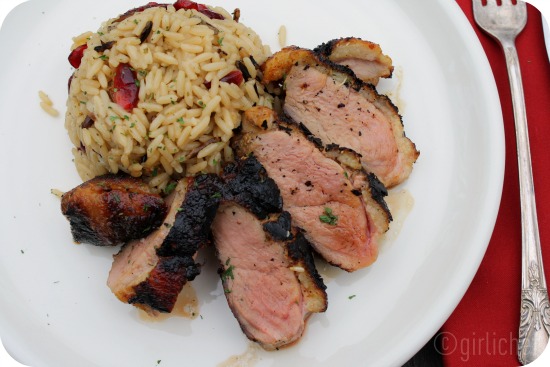
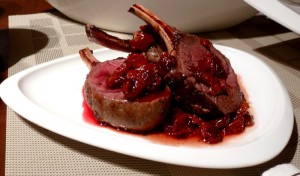
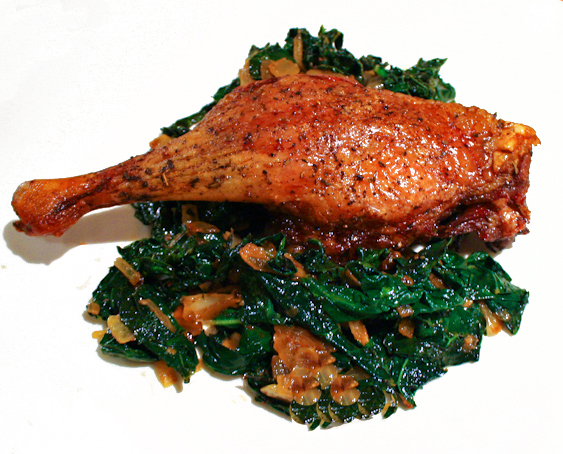

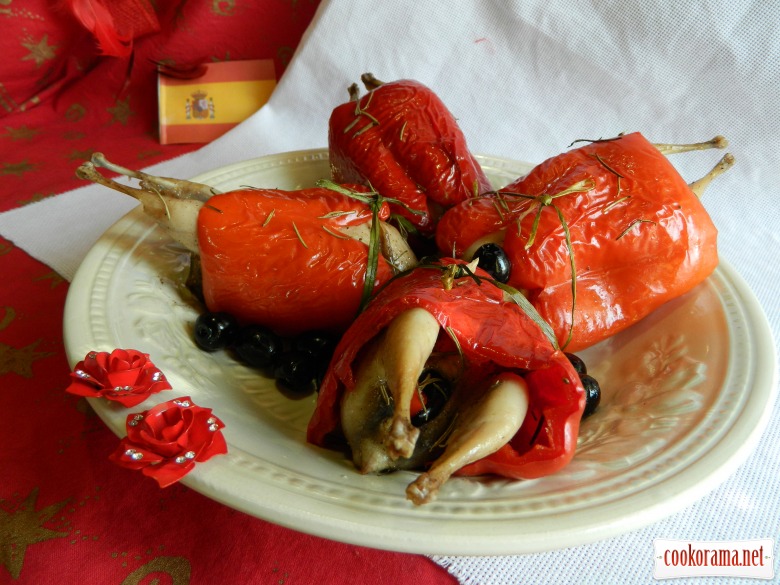
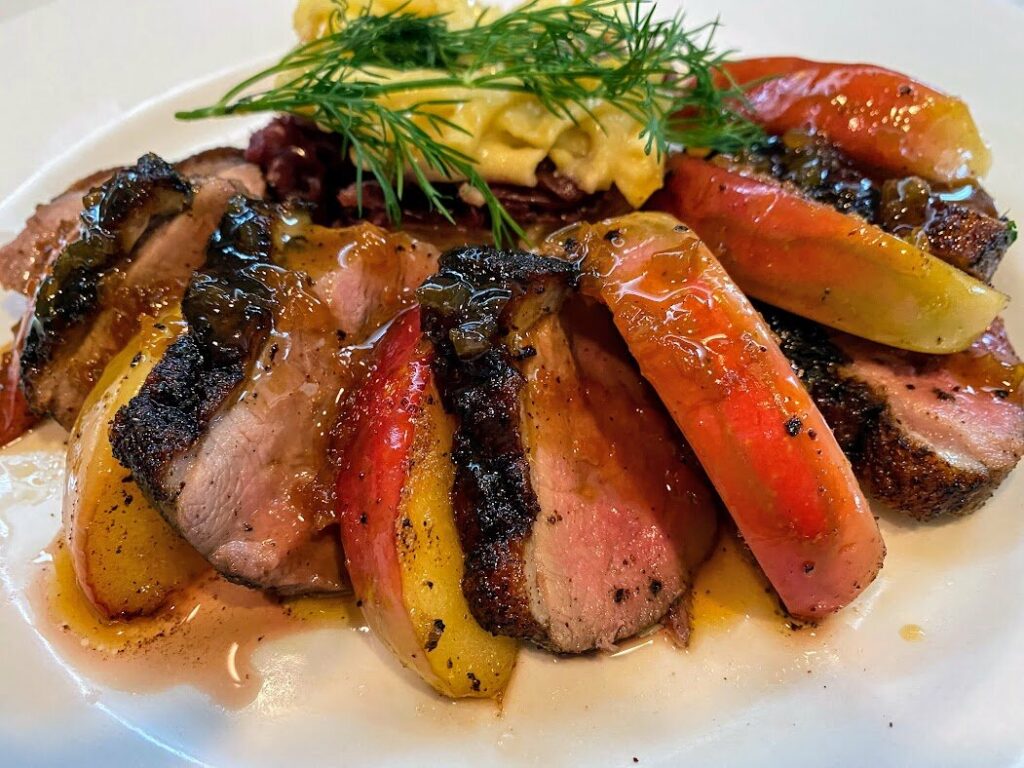 1 tsp. ground allspice
1 tsp. ground allspice